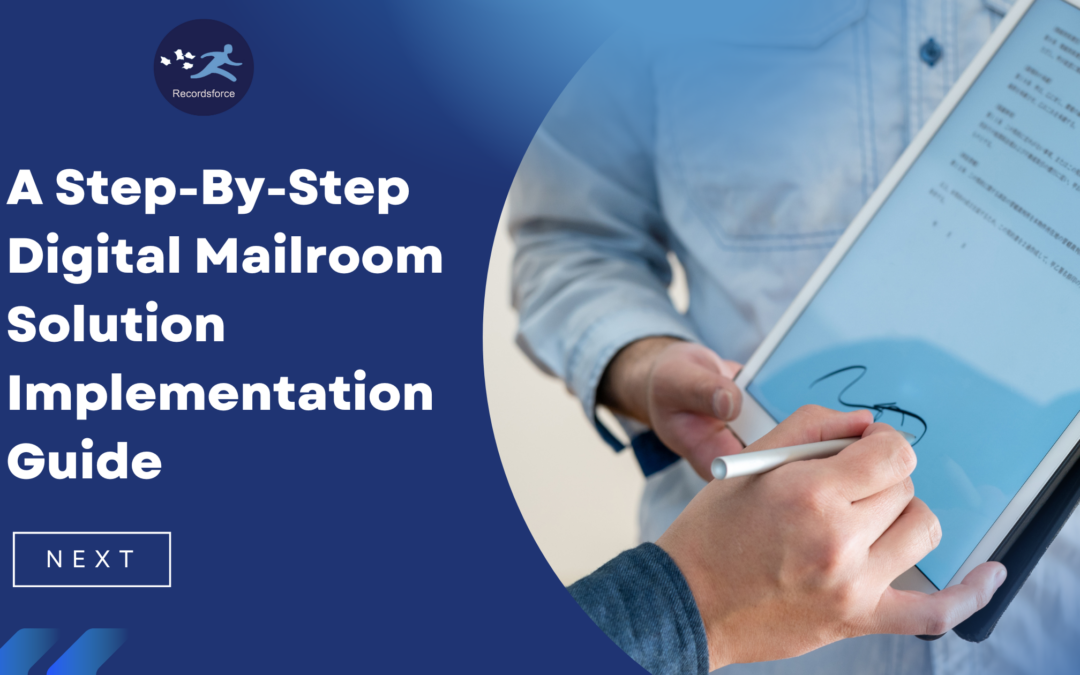Organizations are constantly searching for ways to streamline their operations and enhance efficiency. One way to do so is turning a manual process for incoming physical mail into a digital mailroom. Traditional mailrooms are time-consuming, error-prone and lack transparency, whereas digital mailrooms provide an efficient way to quickly receive only the mail you need. If you’re thinking about making the transition, here’s a step-by-step guide to help companies seamlessly transition to a digital mailroom.
1. Assess your organization’s needs
Before implementing a digital mailroom, it’s crucial to assess your specific requirements. Identify the pain points in the current mail process, such as lost documents or inefficient routing. Determine the goals for using a digital mailroom, like reducing costs or enhancing security. Knowing these can help guide your selection process and ensure a tailored solution.
2. Choose the right digital mailroom provider
Research and evaluate the different digital mailroom solutions and systems available in the market. Look for features that specifically align with your organization’s needs, such as the need for optical character recognition (OCR), automated data classification, workflow and integration with your existing software. Other things to consider include the system’s scalability, user-friendliness, security measures and customer support.
3. Plan and prepare
Once you have selected a digital mailroom provider, create a detailed implementation plan. At Recordsforce, we meet with your team on a weekly basis to identify the different document types you have, the volume to be handled, the number of users, and any specific integration requirements. We design business process rules and routing rules for each document type and then build out your delivery workflow.
4. Testing and user training
Before fully deploying the digital mailroom system, a provider should conduct thorough testing to ensure its functionality and performance. At Recordsforce, as mail starts to come in, we perform testing and make alterations to the process as needed to best suit your needs. We encourage feedback and try to address any issues or usability concerns. It’s also important to introduce the digital mailroom system to your employees through comprehensive training sessions. Ensure that your users understand the functionalities, such as processing and retrieving mail items.
5. Full deployment, production and monitoring
Once the testing has been successful, it’s time to roll out the digital mailroom system organization-wide. Your provider should be monitoring the performance of your digital mailroom closely during the initial stages and address any problems promptly. Make sure to regularly review system analytics and metrics to assess the impact on the transition on efficiency, productivity, and cost savings.
Implementing a digital mailroom can revolutionize the way organizations manage their incoming physical mail and documents, bringing efficiency, security, and transparency into the process. By following this step-by-step implementation guide, companies can seamlessly transition to a digital mailroom system completely prepared. With proper planning, organizations can optimize their mail management operations and reap the benefits of a digital mailroom solution.

